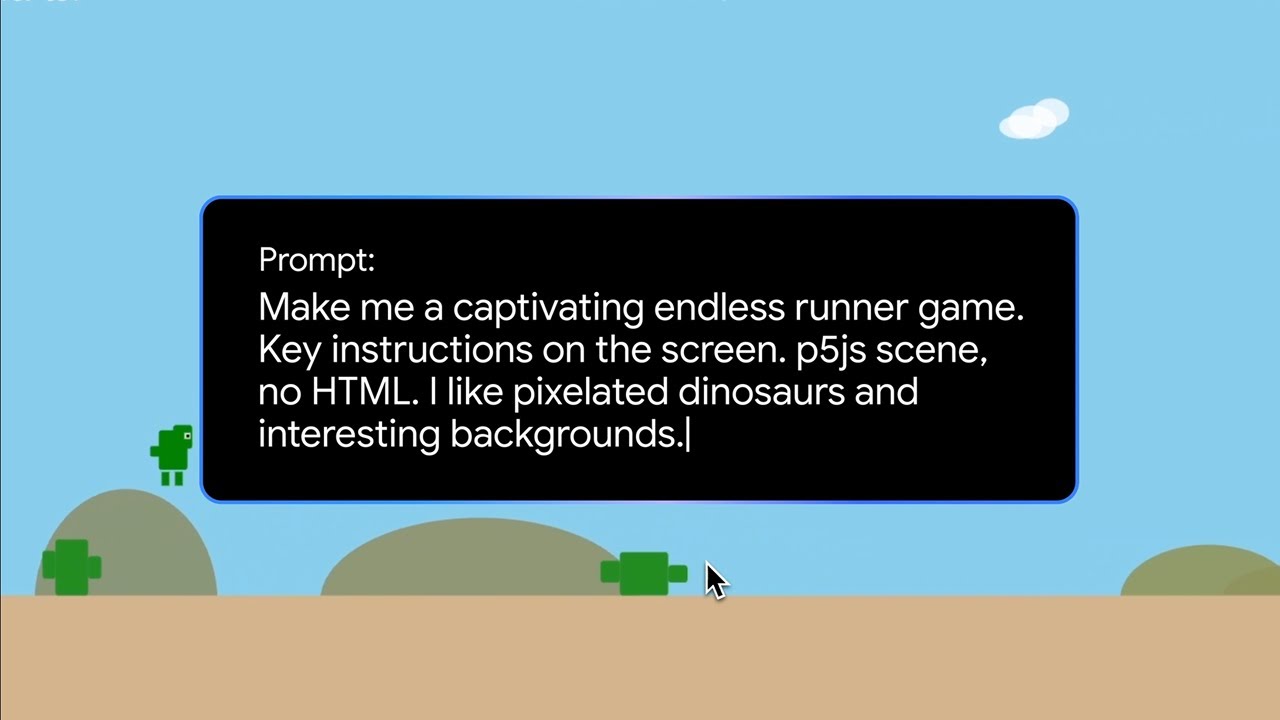The video demonstrates the capabilities of the Gemini 2.5 AI model by creating a fully functional dinosaur game from a single line prompt, showcasing its ability to generate game elements like graphics and gameplay mechanics. The presenter also discusses the underlying technology and algorithms used, while providing a live gameplay demonstration that highlights both the strengths and limitations of the AI-generated game.
In the video titled “Gemini 2.5: Create your own dinosaur game from a single line prompt,” the presenter showcases the capabilities of the Gemini 2.5 AI model in generating a fully functional game based on a simple text prompt. The demonstration begins with the presenter inputting a single line prompt that describes the desired features and theme of the dinosaur game. This highlights the AI’s ability to interpret and expand upon minimal information to create a complex interactive experience.
As the video progresses, viewers witness the step-by-step process of the AI transforming the prompt into a playable game. The presenter explains how the AI generates various game elements, including graphics, gameplay mechanics, and character designs. This showcases the versatility of the Gemini 2.5 model, emphasizing its potential to streamline game development by automating many of the creative processes typically handled by human developers.
The video also delves into the technical aspects of how the AI constructs the game. The presenter discusses the algorithms and programming languages utilized by Gemini 2.5, providing insights into how the AI translates the prompt into code. This segment is particularly informative for viewers interested in the intersection of artificial intelligence and game design, as it reveals the underlying technology that powers the game creation process.
Throughout the demonstration, the presenter interacts with the game, showcasing its features and gameplay. This live testing allows viewers to see the practical application of the AI’s output, highlighting both the strengths and potential limitations of the generated game. The presenter offers commentary on the gameplay experience, discussing aspects such as user interface, responsiveness, and overall enjoyment, which adds a layer of critical analysis to the demonstration.
In conclusion, the video serves as an engaging exploration of the capabilities of the Gemini 2.5 AI model in game development. By transforming a simple prompt into a fully functional dinosaur game, the video illustrates the potential for AI to revolutionize the gaming industry. It encourages viewers to consider the future of game design and the role that artificial intelligence may play in shaping creative processes, ultimately inspiring a new generation of developers to experiment with AI-driven game creation.
